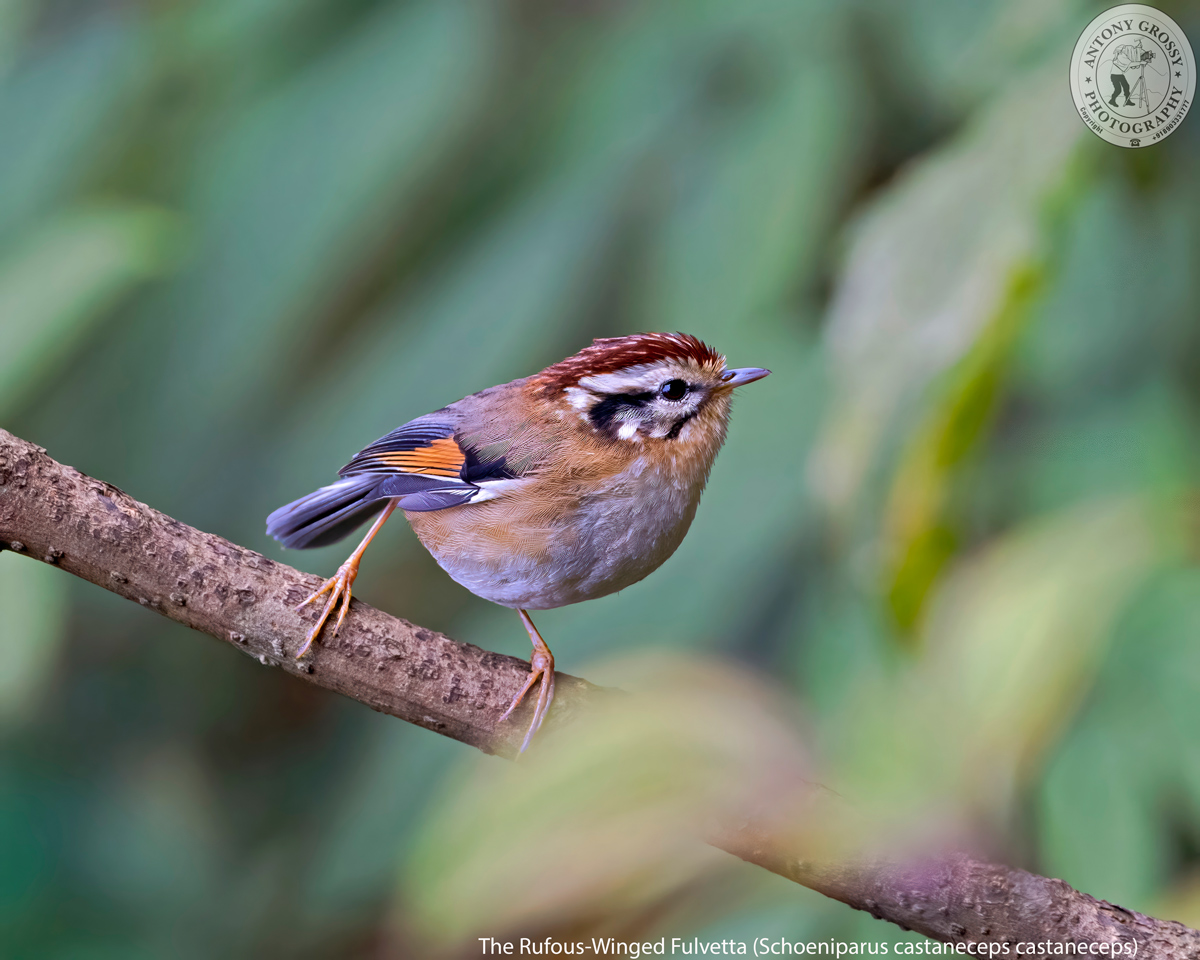

|
 |
| The Rusty-Winged Whisperer of Hill Forests – The Rufous-Winged Fulvetta |
| The Rufous-Winged Fulvetta, is an ornately
patterned Fulvetta, with a rich coffee-brown crown, an orange wing panel, and a decurved black brow and thin mustache on a white face. Moves quickly through the lower and middle levels of the forest in large flocks, often mixed in with other species, including babblers, leaf warblers, and other Fulvettas. Clambers around on trunks and branches like a nuthatch or a treecreeper. Inhabits mid- to high-altitude broadleaf forests. Its common name is misleading, because it is not a close relative of the “typical” Fulvettas, . . . . . . . . . .. .. …. ……. . .. … …… ………………………. ………….. ……………….. .. …. …. ……….. … …. ……….. … …. ………… ………….. ………… ………… ….. ………. …………. …….. ……………. …… …. …. ……….. … …. ……….. .. ………… ….. ………. …………. …….. …………. The Rufous-Winged Fulvetta named for its distinctive rufous-coloured wings, that belongs to the family Alcippeidae and isnt a Fulvetta. Very small olive-brown and whitish Babbler with pale-streaked dark chestnut crown, black-and-white face, and black and chestnut panels in wing. It measures about 10 to 13 cms in length and weighs about 8 to 12 gms. The Male of the nominate race has crown dull chestnut with buff (a few white) shaft streaks, upperparts dull olive-brown, upperwing and tail browner, greater wing-coverts and primary coverts black with white carpal, flight-feathers basally bright rufous in backward-narrowing wedge (wingpanel); long white supercilium, black upper ear-coverts and silvery-white lower ear-coverts bordered below by black cheek and short moustachial line; chin to belly whitish, submoustachial area, neck side, breast side, flanks, thighs and vent bright olive-ochre; iris dark brown to reddish-brown; bill horn-brown, paler lower mandible; legs brownish to dull yellow. Both Sexes are similar. The Juvenile has slightly duller, paler crown than adult, slightly more olive-ochre on underparts, generally across breast and belly. There are Four subspecies recognized all having slightly different colourations and plumage. . . . . . . . . . .. .. …. ……. . .. … …… ………………………. ………….. ……………….. .. …. …. ……….. … …. ……….. … …. ………… ………….. ………… ………… ….. ………. …………. …….. ……………. …… …. …. ……….. … …. ……….. .. ………… ….. ………. …………. …….. …………. The Rufous-Winged Fulvetta are found in the Himalayas and North East Indian hills, China, Bhutan, Laos, Malaysia, Myanmar, Nepal, Thailand and Vietnam. They predominantly inhabits dense forests comprising mixed vegetation types. It favours mid to upper elevational ranges between 2,000 to 3,200 mtrs above sea level. The preferred environments for these birds are subtropical or tropical moist montane forests rich with thick undergrowth, Broadleaf evergreen forest, secondary forest, forest edge, bamboo, abandoned clearings. . . . . . . . . . .. .. …. ……. . .. … …… ………………………. ………….. ……………….. .. …. …. ……….. … …. ……….. … …. ………… ………….. ………… ………… ….. ………. …………. …….. ……………. …… …. …. ……….. … …. ……….. .. ………… ….. ………. …………. …….. …………. The diet of this charming little bird consists mainly of insects and their larvae, seeds, and fruits. Like many passerines, they’re adept at catching their prey in flight or foraging on branches and foliage in search of food. Also feeds occasionally on tree sap. Found in large flocks, typically of 20 to 40 individuals, but up to 70 outside breeding season; sometimes forms core of mixed-species foraging flocks, which may contain other babblers. Flocks move very quickly. Climbs about moss-covered and lichen-covered trunks, usually within 9 mtrs of ground, in manner of Nuthatch. . . . . . . . . . .. .. …. ……. . .. … …… ………………………. ………….. ……………….. .. …. …. ……….. … …. ……….. … …. ………… ………….. ………… ………… ….. ………. …………. …….. ……………. …… …. …. ……….. … …. ……….. .. ………… ….. ………. …………. …….. …………. Their Song is a relatively rich but high-pitched, tinkling, undulating and slightly descending series of 48 notes, si tju-tji-tju-tji-tju or sweet-swit-siti-siti-seeti-seeti. Their usual calls include mixture of subdued harsh tcht, tchit and tchrr notes, thin tsi-tsi-tsi-trrt and loud, dry, stuttering crisp rattles given in variable bursts. . ……… … …. ………… ………….. ………… ………… ….. ………. …… ………….. ………… ………… ….. ………………….. … ………… ….. ………. …… ………….. ………… ………… …. … ……………. ………… ….. ……………………………. …. …. … .. …………………. …. …………………….. ….. …………….. .. Description Credit Birds of the World (The Cornell Lab), Oiseaux, Animalia, Ogaclicks, Birds of India | Bird World, Bird Count India & Wiki. |
  |
|
|






































































































































































































































































































































































































































































































































































































































































